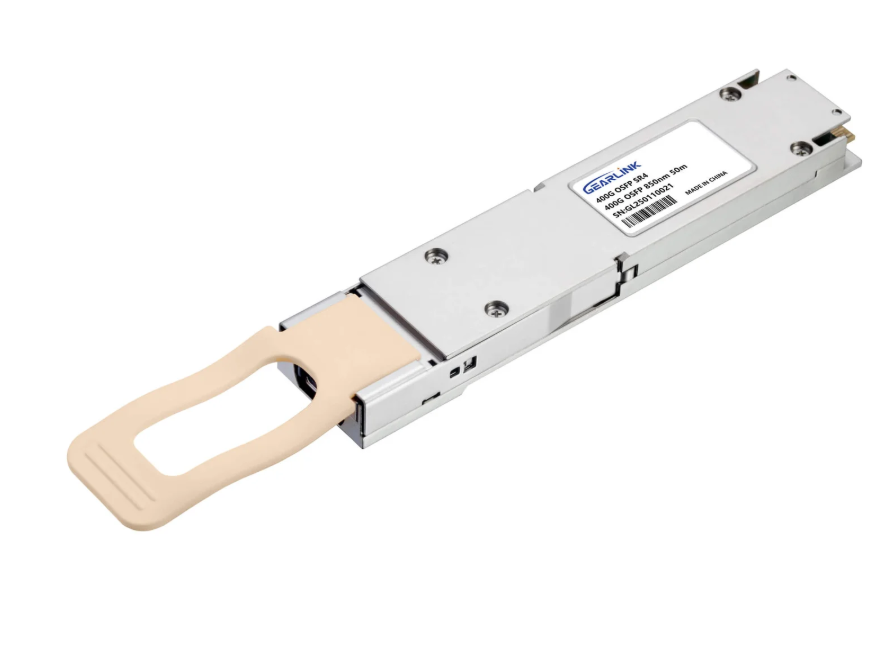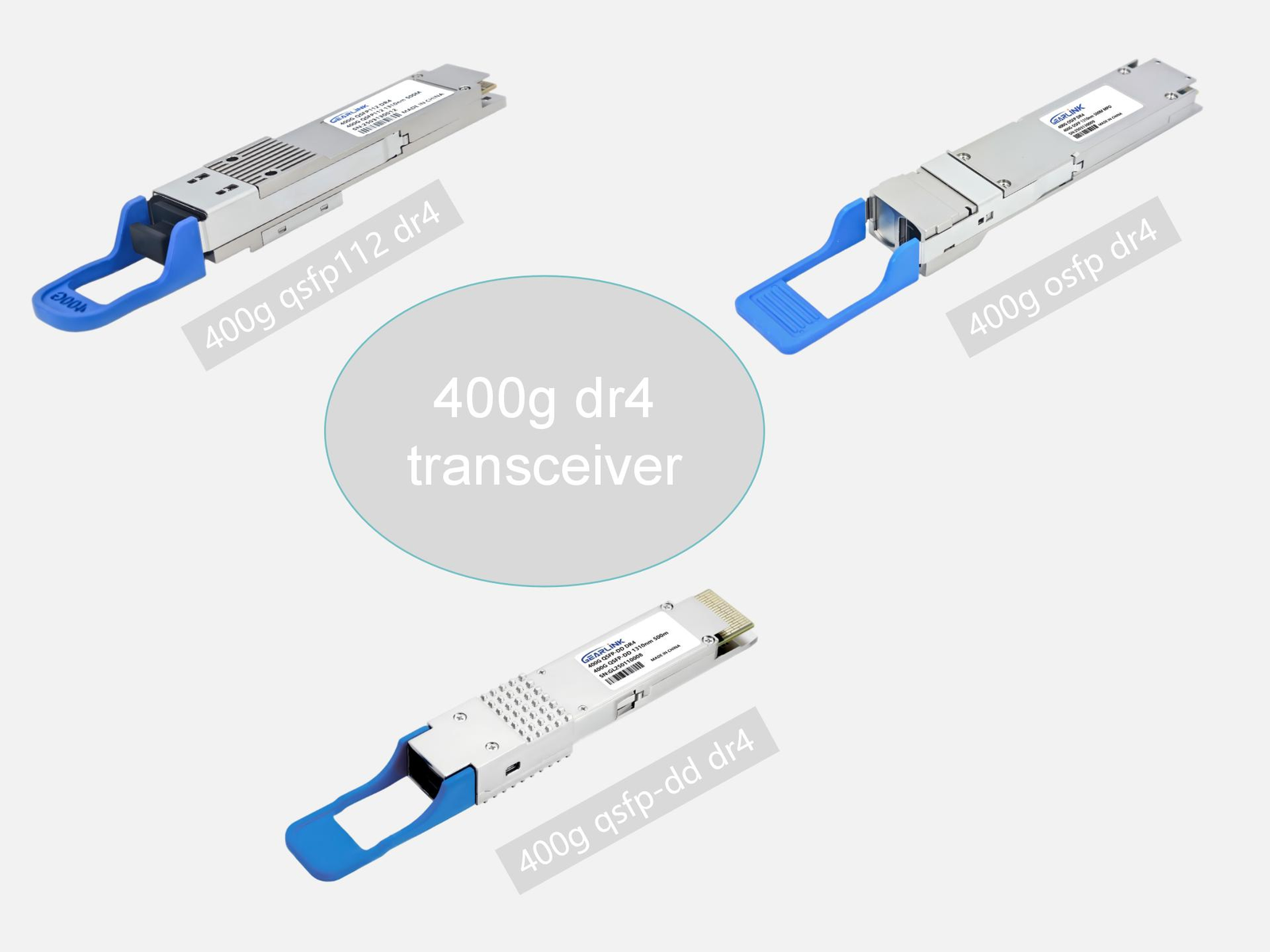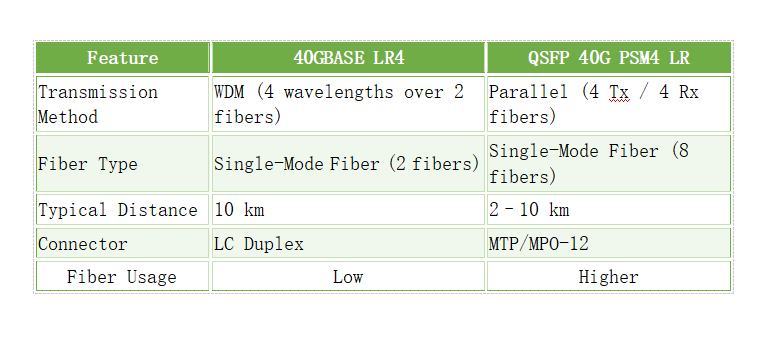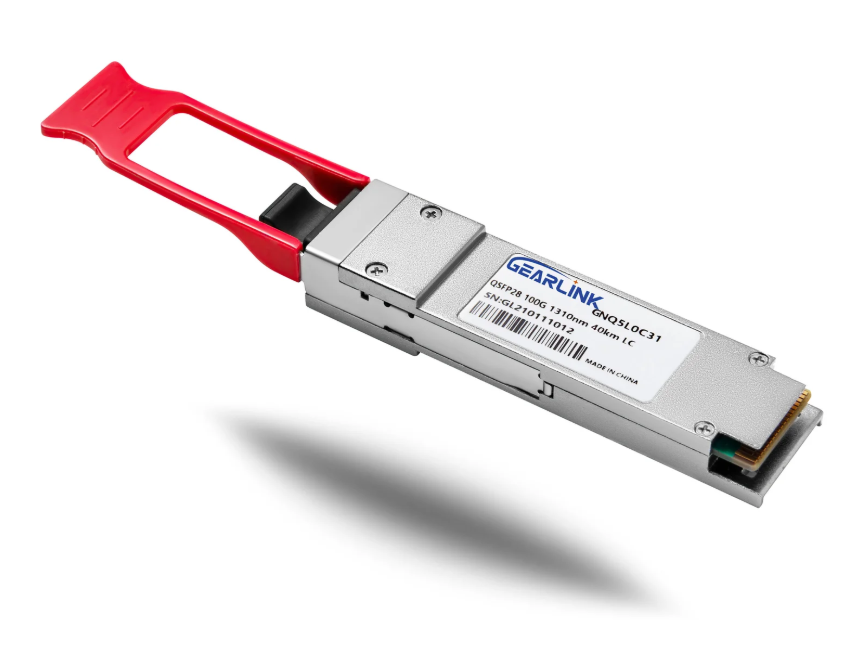The relentless demand for bandwidth, driven by cloud computing, AI, machine learning, and high-performance computing, has continually pushed the boundaries of data center architecture. As network operators and enterprise IT architects seek more efficient and denser ways to handle massive data throughput, the jump from 100G and 200G to 400G has become a necessity. In this evolution, one specific module has emerged as a powerhouse for short-reach connectivity: the 400G OSFP SR4 optical transceiver. Understanding this module is crucial for anyone involved in designing, deploying, or managing modern data center networks. This in-depth analysis focuses on the technical merits, operational advantages, and strategic role of the 400G OSFP SR4 within the optical module ecosystem, offering substantial value to product users seeking optimal performance and future-proofing.
The Foundation: Introducing the 400G OSFP SR4 Transceiver

The journey to 400G required a radical shift in how optical signals are managed and transmitted. The 400G OSFP SR4 represents a convergence of several advanced technologies to achieve this monumental speed. OSFP, which stands for Octal Small Form-factor Pluggable, is one of the two dominant form factors, alongside QSFP-DD, designed specifically for 400G applications. The OSFP standard is slightly larger than its QSFP-DD counterpart, which allows it to incorporate more sophisticated thermal management capabilities, a crucial feature when dealing with the increased power consumption inherent in 400G speeds. This larger footprint, consequently, allows the transceiver to run cooler and potentially offer more consistent performance in high-density environments.
The nomenclature further specifies the module’s function: 400G denotes the total aggregated data rate, while SR4 signifies Short-Reach, 4 channels. The “4” refers to the four parallel optical lanes utilized by the module. Instead of using a single laser operating at an extremely high baud rate, the 400G OSFP SR4 employs eight 50G electrical lanes feeding a sophisticated serializer-deserializer (SerDes) that drives four independent optical lanes, each carrying 100 Gbps. These lanes transmit over four pairs of multi-mode fibers (MMF), leveraging the well-established 850 nm Vertical-Cavity Surface-Emitting Laser (VCSEL) technology. The use of multi-mode fiber with a maximum link distance of 70 meters (OM3) or 100 meters (OM4/OM5) firmly positions the 400G OSFP SR4 as the primary solution for intra-rack and short inter-rack connections within the data center, where simplicity and low power are highly valued.
Technical Superiority: Key Features Defining 400G OSFP SR4 Performance
The true value proposition of the 400G OSFP SR4 lies not just in its speed, but in the combination of technical features that make it robust and highly deployable. Several design choices directly contribute to its operational excellence and overall utility for optical module product users.
Leveraging 50G PAM4 Modulation
Central to the 400G capability is the utilization of Pulse Amplitude Modulation (PAM4). Unlike the older Non-Return-to-Zero (NRZ) signaling, which only uses two voltage levels to represent a single bit (0 or 1), PAM4 employs four distinct voltage levels to encode two bits of data per clock cycle (00, 01, 10, or 11). This ingenious technique effectively doubles the data rate for a given baud rate. For the 400G OSFP SR4, this means the module can achieve a 100 Gbps data rate per lane while operating at a 50 Giga-Baud (Gbd) rate. Consequently, system architects can achieve 400G performance using existing high-volume components like 50G VCSELs, making the technology economically viable and highly reliable. Furthermore, the ability to utilize multi-mode fiber for short distances significantly reduces the cost and complexity associated with single-mode fiber deployment and management within the dense data center environment.
Unmatched Density and Thermal Management
The OSFP form factor was purpose-built for the heat generated by 400G optics. A large portion of the module’s body is designed as a heatsink, allowing for superior heat dissipation. This feature is particularly crucial for short-reach modules like the 400G OSFP SR4, which are often deployed in extremely dense environments like spine and leaf switches. Effective thermal management ensures the module operates within its specified temperature range, directly contributing to its long-term reliability and Mean Time Between Failure (MTBF). A cooler module also translates to less power draw and lower cooling costs for the data center—a significant operational expenditure benefit.
Breakout Functionality for Seamless Integration
One of the most strategic advantages for product users is the inherent capability of the 400G OSFP SR4 to operate in a breakout mode. This module can be configured to operate as four independent 100G SR1 links. Using an MPO connector, the 400G signal can be split, or “broken out,” into four separate 100G links. This functionality provides immense flexibility for network upgrades and migrations. For instance, a network operator can connect a 400G spine switch port to four different 100G leaf switches using a single 400G OSFP SR4 module and a fan-out cable. This dramatically increases port utilization and allows for gradual, as opposed to wholesale, network upgrades, maximizing the return on investment in existing 100G infrastructure.
Strategic Applications in the Data Center
The 400G OSFP SR4 is not merely a component; it is a strategic tool enabling the next generation of data center topologies. Its specific design parameters perfectly align with the core requirements of high-speed intra-building connectivity.
Spine-and-Leaf Architecture
The prevalent spine-and-leaf topology in hyperscale and enterprise data centers requires massive bandwidth between the spine (core) and leaf (access) switches. The short-reach requirement of this architecture—typically within the same row or adjacent racks—makes the 400G OSFP SR4 an ideal fit. It provides the necessary 400G uplink from the leaf to the spine while utilizing cost-effective multi-mode fiber. Its high port density allows operators to connect more leaf switches to a single spine, increasing the network’s overall radix (connectivity ratio) and reducing oversubscription.
High-Performance Computing (HPC) and AI Clusters
In HPC and AI environments, data movement between GPU and CPU nodes is a critical bottleneck. These clusters often require dedicated, ultra-high-speed networks over short distances. The low-latency and high-throughput capabilities of the 400G OSFP SR4 make it an excellent choice for connecting specialized servers and accelerators. The short-reach nature of the link minimizes signal loss and propagation delay, which is paramount in latency-sensitive applications like distributed machine learning training where even a few nanoseconds of delay can impact synchronization and convergence time.
Future-Proofing with Backward Compatibility
While the immediate focus is 400G, the underlying technology facilitates a pathway for future upgrades. The standardized OSFP Multi-Source Agreement (MSA) ensures that the module and its host ports are defined by industry consensus, guaranteeing interoperability. Moreover, the inherent ability of the 400G OSFP SR4 to break out to 4x100G means that the installed multi-mode fiber plant can be leveraged for years to come, providing a solid, dependable foundation for future upgrades, perhaps to 800G, without requiring a complete fiber overhaul. This careful consideration of longevity offers significant economic benefits to optical module product users.
Operational and Economic Advantages
Beyond the technical specifications, the deployment of the 400G OSFP SR4 yields clear operational and economic benefits that directly impact the total cost of ownership (TCO).
Cost-Effective Fiber Infrastructure
The reliance on multi-mode fiber (MMF) is perhaps the most significant economic advantage. Multi-mode fiber is considerably less expensive to procure, install, and manage than single-mode fiber (SMF), especially over short distances. Furthermore, installation tolerances for MMF are generally more forgiving, leading to faster deployment times and lower labor costs. By providing a high-speed, 400G link over this economical fiber type, the 400G OSFP SR4 significantly lowers the barrier to entry for 400G adoption within existing MMF data centers.
Power Efficiency and Sustainability
As data center power consumption becomes a major environmental and financial concern, the power efficiency of optical modules is under intense scrutiny. Although 400G modules inherently draw more power than their 100G predecessors, the 400G OSFP SR4 has been optimized to be as efficient as possible. The OSFP form factor’s thermal design allows the module to operate effectively without requiring excessive active cooling from the switch or data center infrastructure. A lower power draw per bit transmitted not only reduces the electricity bill but also supports corporate sustainability goals, demonstrating a commitment to environmentally responsible technology deployment. The continuous pressure on module manufacturers to reduce power consumption means that each successive generation of 400G OSFP SR4 will likely offer even greater efficiency gains.
Conclusion: The Strategic Value of 400G OSFP SR4
The 400G OSFP SR4 is a defining component in the current generation of data center optical networking. It perfectly balances high-speed performance, thermal stability, and cost-effectiveness. By utilizing proven 850 nm VCSEL technology and the efficiency of PAM4 signaling over multi-mode fiber, it delivers a robust, highly reliable solution for the critical short-reach links that define modern, high-radix network architectures. For optical module product users, selecting the 400G OSFP SR4 is a strategic decision that offers immediate benefits in density and bandwidth, along with long-term advantages in cost management and network flexibility. It is not just a solution; it stands out as the ultimate, indispensable short-reach interconnect for the demanding 400G ecosystem, propelling cloud and enterprise networks into the next era of data throughput.
Frequently Asked Questions (FAQ)
Q1: What is the primary difference between OSFP and QSFP-DD 400G modules? A: The primary difference is the size and thermal capacity. OSFP is slightly larger, allowing for better heat dissipation and higher potential power consumption. Both are used for 400G, but OSFP’s superior thermal management can be beneficial in high-density applications where heat is a major concern.
Q2: Can the 400G OSFP SR4 be used with single-mode fiber (SMF)? A: No, the 400G OSFP SR4 is specifically designed for use with multi-mode fiber (MMF). For 400G short-reach links over SMF, a different module, such as the 400G DR4, would be required. The SR4 uses 850 nm VCSELs, which are optimized for MMF.
Q3: What cable is required to utilize the breakout functionality of the 400G OSFP SR4? A: The breakout functionality requires a MPO-12 (Male) connector on the module side, which is typically broken out to four duplex LC connectors on the switch side. This cable is known as a 400G to 4x100G MPO breakout cable or MPO fan-out cable.
Q4: What is the maximum distance the 400G OSFP SR4 can transmit? A: The maximum transmission distance depends on the multi-mode fiber type: it is 70 meters over OM3 fiber and 100 meters over OM4 or OM5 fiber.





